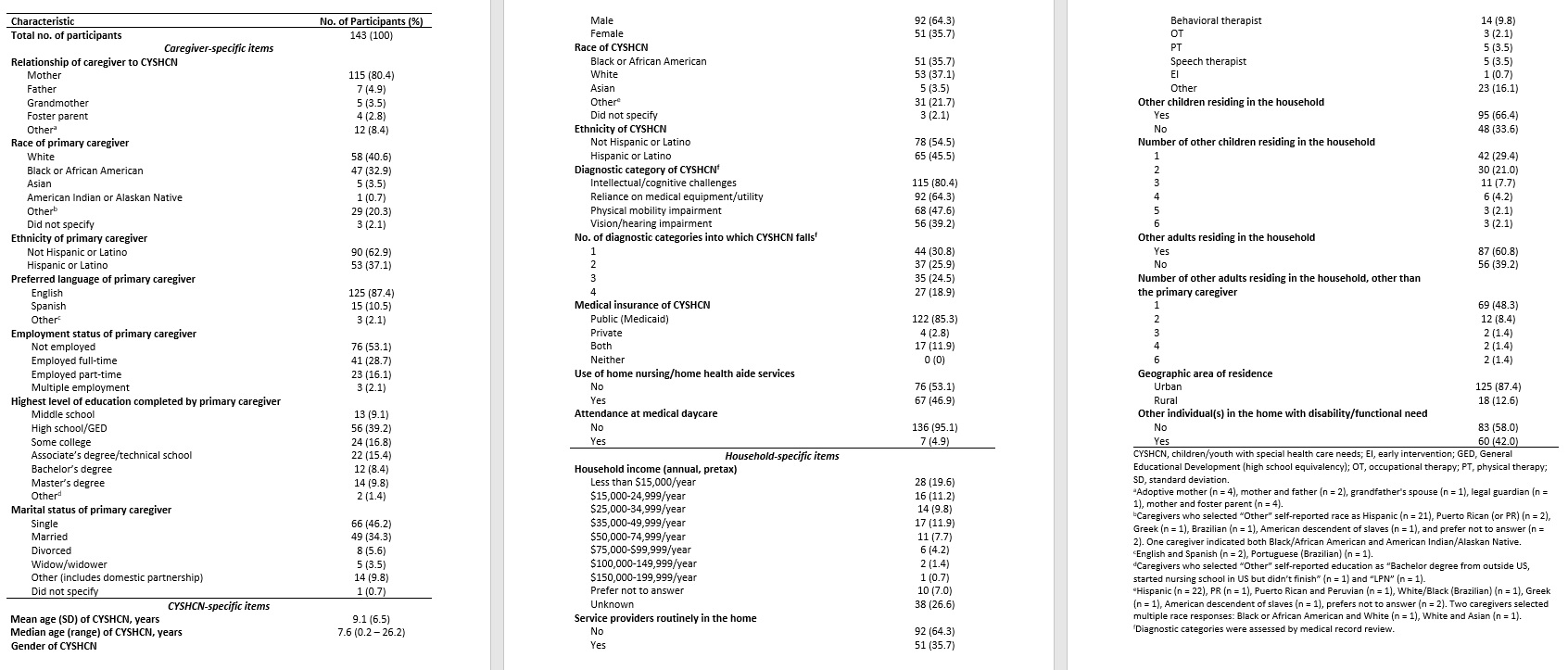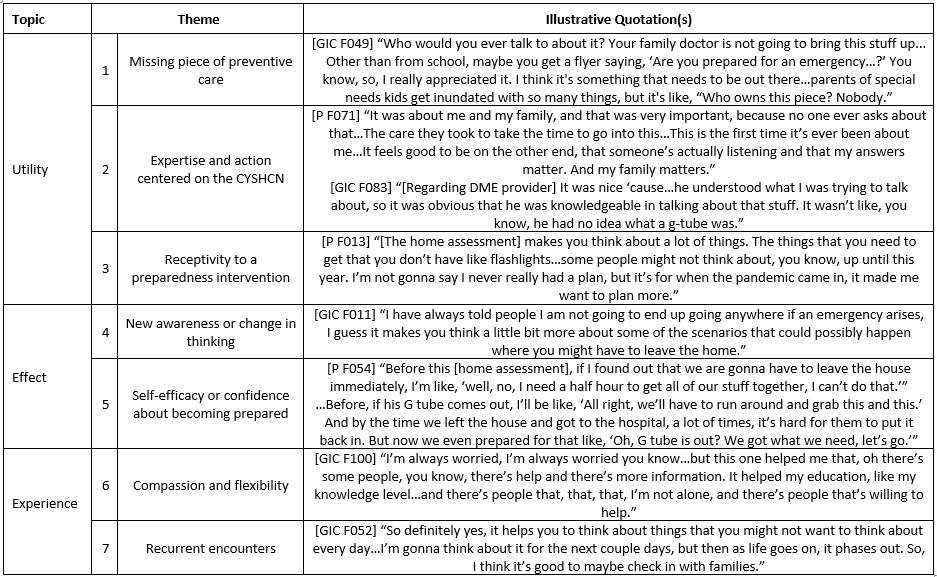Children with Chronic Conditions
Children with Chronic Conditions 1
716 - Experiences of Caregivers of Children and Youth with Special Health Care Needs in an Emergency Preparedness Home Assessment
Publication Number: 716.105

Renee Turchi, MD, MPH, FAAP (she/her/hers)
Chair of Pediatrics and Pediatrician in Chief
St. Christopher's Hospital for Children
Drexel University College of Medicine and School of Public Health
Abington, Pennsylvania, United States
Presenting Author(s)
Background:
Studies aimed at improving emergency preparedness for families of children and youth with special health care needs (CYSHCN) have found approaches such as education, one-on-one training, and providing emergency kits to be associated with improved metrics of preparedness. However, the experiences of caregivers who receive these interventions have not been well documented, limiting interpretability and scalability.
Objective:
Understand the experiences of caregivers of CYSHCN who participated in a home-focused preparedness assessment.
Design/Methods:
From April 2020 to June 2022, we conducted a 2-stage virtual home assessment designed to capture quantitative indicators of family readiness for emergency scenarios, with a focus on the CYSHCN’s medical condition(s). After the initial assessment, as-needed referrals were made to local resources, and caregivers received customized preparedness materials. After the 3- to 6-month follow-up assessment, caregivers shared feedback in a semi-structured interview (SSI) developed with input from CYSHCN caregiver-advisors. Transcripts of the SSIs were coded and thematically analyzed in NVivo by a trained 4-person team. Interrater reliability was confirmed with Cohen’s κ.
Results:
Of the 170 caregivers who participated in the initial home assessment, 148 completed the follow-up assessment, and 143 completed the SSI. The caregivers’ CYSHCN had technology dependence, mobility impairment, intellectual disability, and/or vision/hearing loss; 69% had ≥2 of these conditions (Table 1). Seven key themes were organized into 3 thematic clusters: Utility, including (1) preparedness as a missing piece of preventive care, (2) expertise and action centered on the CYSHCN, and (3) receptivity to a preparedness intervention; effect, including (4) new awareness or thinking about preparedness, with/without changes in behavior and (5) change in self-efficacy or confidence about becoming prepared; and experience, including (6) compassion and flexibility from the research team and (7) benefit of recurrent preparedness encounters (Table 2). Nearly all caregivers affirmed they would recommend the home assessment to other families with CYSHCN.
Conclusion(s):
Caregivers generally felt that the home assessment improved their emergency preparedness because of its delivery by trusted professionals affiliated with the child’s medical practice who took action to address the family’s unique planning needs.

